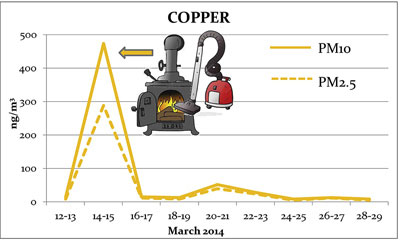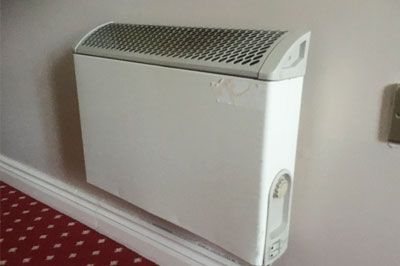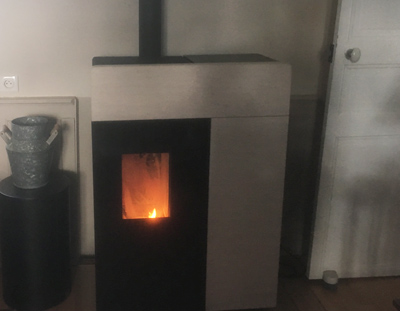Warning: Trying to access array offset on value of type bool in /var/www/foxof.com/wp-content/plugins/all-in-one-schemaorg-rich-snippets/functions.php on line 982
Warning: Trying to access array offset on value of type bool in /var/www/foxof.com/wp-content/plugins/all-in-one-schemaorg-rich-snippets/functions.php on line 982
Warning: Trying to access array offset on value of type bool in /var/www/foxof.com/wp-content/plugins/all-in-one-schemaorg-rich-snippets/functions.php on line 982
Warning: Trying to access array offset on value of type bool in /var/www/foxof.com/wp-content/plugins/all-in-one-schemaorg-rich-snippets/functions.php on line 984
Warning: Trying to access array offset on value of type bool in /var/www/foxof.com/wp-content/plugins/all-in-one-schemaorg-rich-snippets/functions.php on line 984
Warning: Trying to access array offset on value of type bool in /var/www/foxof.com/wp-content/plugins/all-in-one-schemaorg-rich-snippets/functions.php on line 984
Home / Heating / Electric Heating / Infrared Heating / Which heating system should be chosen for asthmatics and to combat allergies? (español – français – italiano)
What type of heating should be used in case of respiratory disease (or difficulty)?
Share this page
To limit the respiratory discomfort of frail people or those with chronic respiratory diseases, indoor air pollution must be limited. People who suffer from «fragility» or respiratory difficulties (asthmatics, people with chronic respiratory illnesses, allergy sufferers, etc.) should favour certain heating methods to limit its impact on their health. In all cases, it is advisable to renew the air inside the home and to air each room at least twice a day for at least 15 minutes.
Contents:
- Heating home with wood by open fireplace, insert, or wood stove: health impacts
- Should electric heating be banned for people with respiratory problems?
- Radiant or infrared heating: preferable for people with breathing difficulties
- Choose a heating method that does not dry out the air in the room
- Regular heating maintenance to reduce air pollution
Heating with wood by open fireplace, insert or wood stove: health impacts
Although using a renewable energy source, wood heating contributes significantly to air pollution episodes and to the ambient level of fine particles suspended in the outdoor air. According to a 2015 study (source AIRPARIF) in the Paris region, domestic wood heating contributes to 28% of primary PM10 and 42% of PM2.5 (< 2,5 microns). Open fireplaces and closed fireplaces built before 2002 account for 75% of the particles emitted.
Wood combustion emits pollutants that vary according to the efficiency (output) of the appliance and the moisture content of the wood. Generally these are carbon monoxide (CO), water, nitrogen oxide (NOx), NMVOCs, soot, tars, coal, volatile organic compounds (VOCs), polycyclic aromatic hydrocarbons (PAHs), H², SO², etc.
According to the health protection agencies (regional health observatory – ORS), wood heating with fuel loading directly into the room to be heated (not to be confused with a wood boiler in your basement) is a major source of pollution in residential housing.
If the particles resulting from the (imperfect) combustion of wood are inhaled (open fire, smoke that escapes when starting or (re)loading the wood, leaks linked to a lack of airtightness, pollutants following the elimination of ashes, wood combustion of neighbours by the outside air that comes inside, etc.), the health risks are real. When they penetrate the respiratory system they will promote asthma, coughing, respiratory allergies. Never burn damp wood, which will give off a lot of water vapour, and therefore moisture and mould. Globally (without distinction by pollutant) the deleterious effects are (according to the regional observatory of health of Ile de France): irritation, inflammation, oxidative stress, carcinogenic, neurotoxic, mutagenic, impacts on the cardiovascular system.
Leakage from inserts or wood-burning stoves, is more or less significant depending on the following factors: age, type of appliance, quality of the appliance, quality of installation and maintenance, quality of the smoke evacuation system as well as the way the heating appliance is used, whether or not the manufacturer’s recommendations are followed.
The step of emptying and evacuating the ashes is not trivial. Even if it is carried out quickly, scientific studies (see below) have shown that sometimes significant quantities of copper and manganese are released into the indoor air.

Copper concentration in ambient air (and for more than 4 days at a peak) following ash removal.
Source: Scientific Journal Chemosphere on Sciencedirect.com
For people who do not suffer from respiratory problems, limiting indoor air pollution remains an essential factor in limiting headaches and concentration difficulties, irritations (eyes, nose and throat), and the other toxic effects mentioned above.
In all cases, it is recommended that a carbon monoxide (CO) detector be installed in addition to the smoke detector. Even if it does not detect the various toxic compounds, it will at least indicate the presence of a leak.
Should electric heating be banned for people with respiratory problems?
A distinction should be made between the different types of electric heating to avoid confusion. As detailed in the following paragraphs, heating methods that diffuse warm air by stirring the air and that dry out the air in the room should be avoided.

Convection heating: stirring of room air and allergens
Electric convection heaters (including newer ones) carry dust, mould spores and allergens into the room. The dust that accumulates on the heating element will be «burnt» during the heating process. It will then be stirred up and mixed with the room air you breathe.
For the people concerned, it is imperative to ban this type of heating from their homes. Indeed, the cleaning of electric resistances is hardly possible inside the heating appliances.
Forced-air heaters, where the air passes through a series of fins to heat up, work on a principle comparable to convectors. Supplementary heaters are not designed for continuous heating and can emit significant pollutants..
Radiant heating: preferable for people with respiratory problems
Principle of radiant heating
Radiant heating allows heat to be transferred without contact, just as the sun does not heat the air of our planet directly. Two examples to understand the principle of radiation :
- In winter on a ski slope in beautiful sunshine with an outside temperature of -2°C, you can feel a gentle sensation of comfort. The sun transfers heat to you by infrared radiation. Yet the air in the room remains at -2°C! As soon as a cloud comes between you and the sun, you feel an immediate chill.
- In the middle of winter, you make a fire outside (brazier), the outside temperature is -2°C, yet the fire warms you up and you feel good by the fire. The fire has not heated the air (which would be impossible), it has simply transferred its energy by radiation!
This is the principle of radiant heating, which can be found in wood-burning stoves, underfloor or ceiling heating, old-fashioned centrally heated radiators or today’s infrared heaters.
Impacts of the heat transfer method on health
What are the health impacts of the heat transfer method? They can be important. In fact, the two most widespread heating methods are contrasted here: convection heating and radiation heating. Most conventional heating technologies (electric convection heaters, low-radiant inertia heaters, air-to-air heat pumps that blow hot air, etc.) work by convection (heating the air). Apart from the energy inefficiency of this method of transferring heat to the ambient air, convection is not ideal for people with respiratory problems.
Understanding radiant heating in 2 minutes

(-) Convection Heating: stirring of room air and allergens

(-) Convection Heating: the principle of convection is a cycle of mixing warm and cold air. This stirred air transports the allergens and diffuses them into the room…

(+) Radiation Heating: heats the masses that store the energy and gently releases it to the ambient air without stirring it up…. «This heating creates little air movement, and therefore little dust and allergens…«, explains Dr Déoux for Top Santé

(-) Convection Heating: heats the air but does not heat the masses… the feeling of cold persists. To compensate for this discomfort, the reflex is to increase the temperature which, apart from consuming more, will accentuate the phenomenon of air mixing.
Which heaters work by radiation?
- Infrared or radiant panels. Note that only panels emitting at least 50% radiation (and therefore 50% convection) should be considered. The lack of legislation in this area means that caution should be exercised when faced with claims that should be checked with the manufacturers. The range of radiation must be at least 3 metres in all directions from the location of the heater.
- Low-temperature underfloor heating systems (electric or hot water coils) which radiate upwards and heat the entire thermal mass that makes up the floor. Preferably choose a reversible system to generate cooling during the summer.
- Heated ceilings (usually electric) that radiate heat downwards.
- Some boilers (gas, wood, oil) connected to peripheral hot water heaters and if they are (already) installed in a ventilated room separated from the rest of the house. Non-renewable character (fossil fuels) and air pollution to be taken into account….
- All electric or solar boilers connected to hot water radiators (e.g. cast iron hydronic radiators) or hot water underfloor heating.
- Heating with a wood pellet stove that radiates directly into the room. Unlike conventional wood-burning stoves, it is not necessary to open the appliance to reload the logs during combustion. Also, the ambient air is less likely to be contaminated by fine carbonaceous particles. However, care must be taken to avoid any leakage. Attention should also be paid to the disposal of ashes, which leads to long-lasting air pollution during handling (high concentrations of copper and manganese according to a study by Italian researchers conducted in 2018 and presented in the journal Chemosphere «Influence of advanced wood-fired appliances for residential heating on indoor air quality«.

Choose a heating method that does not dry out the air in the room
Heating systems that rely on forced air (via fans) will dry out the room air.
Regular heating maintenance to limit air pollution
Chimneys with or without inserts should be swept once or twice a year to ensure that the draught is good enough to remove the smoke.
For electric radiant heaters, there is no special maintenance.
For radiant heating by combustion boilers (wood, gas, oil) or pellets, maintenance (recommended twice a year) must be carried out by a professional on the boiler, its gas exhausts and the heat emitters (radiators). These gases, even in small doses, are toxic for the occupants.
Learn more about heating and air quality
Expert File: What are the characteristics of the ideal heater?
How to choose an infrared heater: The best infrared heaters
Expert File: How to measure indoor air quality?
Expert File: How to effectively filter indoor air?
Expert File: How to limit your indoor air pollution?
EN-FOX89





